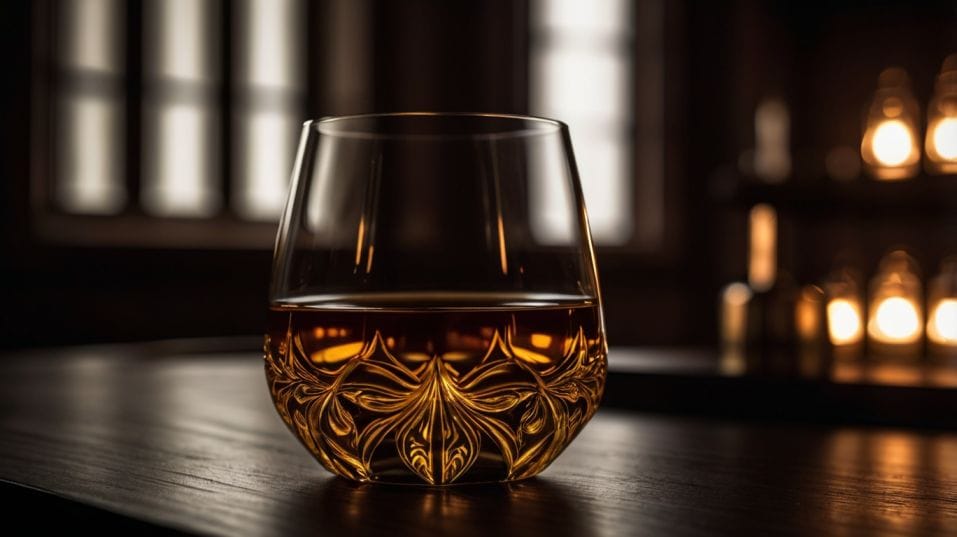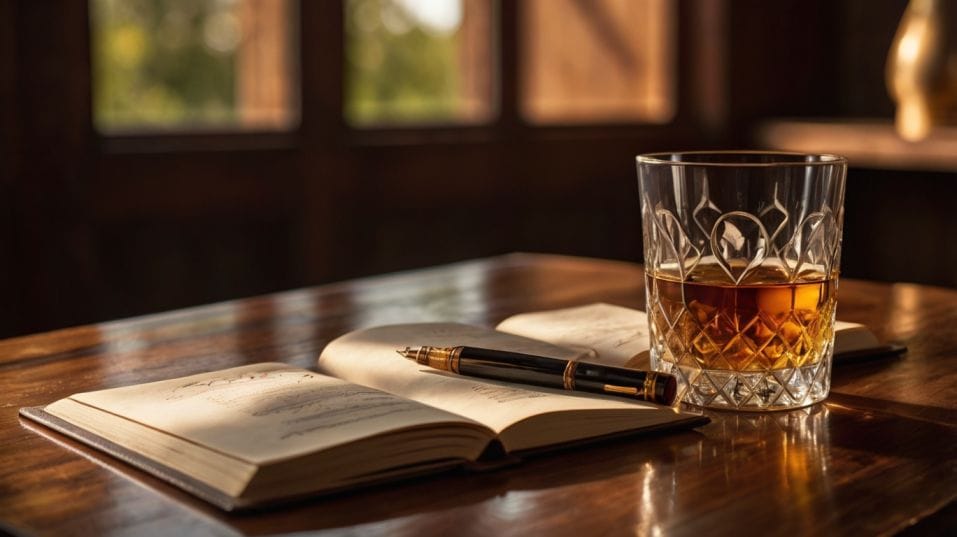Common Whiskey Terms You Should Know
Learn the whiskey terms that actually matter. Decode labels, sharpen your palate, and sip with confidence—even if you're just starting out.

Ever stare at a whiskey label and feel totally lost? If you’re new to the world of whiskey, decoding the jargon can feel like cracking a secret code.
But learning a few key terms changes everything. Suddenly, tasting becomes intuitive, buying gets easier, and conversations make sense.
This guide cuts through the noise and gives you the vocabulary that actually matters—so you can explore, collect, and sip with confidence.
Mash Bill
At its core, whiskey is distilled grain. The mash bill—or grain recipe—defines the personality of the spirit before it ever hits a barrel. In bourbon, the mash must include at least 51% corn, usually rounded out with rye, wheat, or malted barley.
Rye whiskey flips the ratio, emphasizing rye's sharp, dry spice. Wheat offers softness and subtlety. Malted barley adds enzymes and nutty, cereal tones.
Knowing a whiskey’s mash bill helps you anticipate what’s in the glass. Sweet or spicy? Light or bold?
Two bourbons can taste wildly different because of a small rye-to-wheat shift. Once you tune into that, you’re not buying bottles blindly anymore—you’re chasing a flavor profile that fits you.
Fermentation & Yeast Strains
Most labels won’t advertise this, but fermentation is where a lot of a whiskey’s unique flavor starts.
After the grains are mashed and cooked, yeast is added to convert sugars into alcohol. Different yeast strains create different flavors—floral, fruity, funky, or clean.
Some distilleries use proprietary yeast they've cultivated for decades. Others rely on wild fermentation to create unpredictability.
For you, the drinker, this is the hidden layer behind the obvious flavors. Once you know to look for fruity esters or banana notes, you’ll start recognizing yeast-driven signatures across brands.

Distillation Proof & Entry Proof
Distillation proof tells you how strong the alcohol is when it leaves the still. Entry proof is the alcohol percentage when it goes into the barrel.
Legal maximums exist (e.g., 160 proof for bourbon at distillation, 125 proof at entry), but how low a distiller chooses to go affects everything.
Lower entry proof pulls more of the barrel’s sugars, resulting in a rounder, richer mouthfeel. Higher proofs emphasize spice, heat, and spirit character.
There’s no right answer—but understanding the choice helps you decode why one bottle drinks hot and dry while another feels deep and buttery.
Non-Chill Filtered
Most commercial whiskeys are chill-filtered. The spirit is cooled and run through a fine filter to remove fatty acids and proteins. The result? A clearer, shelf-stable whiskey—but often at the cost of texture and depth.
Non-chill filtered whiskey keeps those compounds intact. It may cloud slightly when cold or diluted, but that cloudiness carries flavor and mouthfeel.
If you care about how whiskey feels—not just how it looks—this label is your friend. It often signals a whiskey made with fewer compromises.
Single Malt, Single Barrel, Blended, Small Batch
These aren’t interchangeable. They’re different categories entirely.
- Single Malt: Whiskey made from 100% malted barley at a single distillery. Doesn’t mean it's one barrel—just one distillery. Known for nuance and elegance.
- Single Barrel: Bottled from one individual barrel. No blending, no averaging—just one cask’s character in full. Expect variation and uniqueness.
- Blended Whiskey: A mix of different whiskeys, sometimes from different distilleries. Can be grain and malt, or all-bourbon blends. Often designed for consistency and balance.
- Small Batch: Vague but generally implies a limited batch of hand-picked barrels. Sometimes it means 10 barrels. Sometimes 200. Read between the lines.
Each category offers a different type of drinking experience. If you like control and variety, go for single barrels. If you want refined balance, explore blends. If you want precision and heritage, single malts are your playground.
Cask Strength (or Barrel Proof)
Most whiskeys are diluted before bottling to around 80–100 proof. Cask strength skips that step. It’s bottled at the same strength it came out of the barrel—often north of 110 proof.
Don’t let the numbers scare you. Cask strength isn’t just about alcohol. It’s about control. You get to dilute it how you want, or not at all.
More importantly, you get every drop of flavor, undiluted. When you’re tasting seriously or building a palate, cask strength is an essential tool.
Finish (in Flavor, not in Casks)
The finish is what happens after you swallow. Not just how long the taste lasts, but how it evolves. A whiskey may start sweet but finish bitter. It may bloom into dried fruit, linger with tannic dryness, or vanish clean.
Some finishes are short and clean—others go on for minutes. Pay attention here. The finish is where complexity lives.
It’s also where many premium whiskeys justify their price. Anyone can make a spirit that smells good. A lasting, layered finish? That takes skill.
Secondary Cask Finishes
You’ll see terms like “sherry-cask finished” or “port wood” on many labels. This means the whiskey spent additional time aging in a different type of barrel after its primary maturation.
These casks—often wine, rum, or fortified wine—infuse the whiskey with new flavors: dried fruit, spice, chocolate, nuttiness.
Done right, it adds richness and dimension. Done poorly, it’s overbearing or gimmicky. Secondary finishes aren’t always a guarantee of quality—but they’re worth exploring if you like bold, expressive flavors.
Angel’s Share & Climate Maturation
As whiskey ages, some of it evaporates through the wood. That’s the angel’s share. In humid, hot regions like Kentucky, barrels lose more volume and interact more aggressively with the oak.
In cooler climates like Scotland, evaporation is slower, and the spirit matures more gradually. This affects how you interpret age statements. A 12-year-old Scotch may be subtle and refined.
A 6-year-old Texas bourbon could drink like a spicy, oak-heavy veteran. It’s not just about time—it’s about conditions. Learn to taste for maturity, not just math.
Nose, Palate, Finish
These aren’t pretentious tasting steps—they’re your framework for understanding flavor. The nose is what you smell. The palate is what you taste. The finish is what lingers. Learn to break them apart, and you’ll quickly sharpen your preferences.
The more precisely you describe each step—“banana and cinnamon on the nose,” “toffee and clove on the palate,” “dry oak on the finish”—the faster your tasting skills develop. It’s how you go from casual sipper to confident explorer.
Legs, Body, Mouthfeel
When you swirl a whiskey, the streaks down the glass are called legs. They hint at alcohol content and viscosity, but they’re not reliable indicators of quality. What matters more is mouthfeel—how the whiskey moves and coats your palate.
Is it thin, oily, creamy, tannic, dry, chewy? Texture tells you about barrel interaction, filtration, and even mash bill. Great whiskeys have great texture. It’s the difference between something you sip once and something you savor.
Age Statement
The number on the bottle is the youngest whiskey in the mix. A 10-year-old whiskey might contain older spirits, but never younger.
That said, older doesn’t mean better. Over-oaked whiskey can lose its balance. Youthful whiskey can be bold and vibrant.
What matters is balance, not age. Don’t fall for the myth that older is always worth more. Taste it. Trust your palate. Learn how each producer handles time. That’s where the real value lies.
Final Thoughts
Whiskey isn’t just about what’s in the glass—it’s about how you engage with it. These terms aren’t trivia; they’re tools.
They give you a way to talk, think, and taste with clarity. They help you build a collection that means something, not just a shelf of random bottles.
So here’s the move: Grab a bottle you already own. Read the label. Re-taste it with a sharper eye on texture, finish, and flavor.
Then track down something different—new mash bill, new proof, new barrel—and compare. Start keeping notes. Find what hits. Build from there. You’re not just drinking whiskey anymore. You’re building a palate. Start today.




